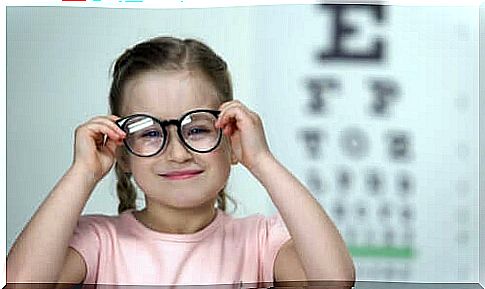How Is Astigmatism Detected In Children?

Astigmatism is a very common visual impairment in children. It affects nearly 15 percent of the total population and in most cases begins in childhood or adolescence.
This is because astigmatism has a certain hereditary component. This information can help guide the diagnosis, as in many cases it is also associated with other visual disorders, such as myopia, which is also an inherited visual disorder.
The problem, however, is that if children’s astigmatism is not detected at an early stage, it can have a significant impact on their school attendance. Therefore, in this article, we tell you what you need to know about this sight and its diagnosis.
What is astigmatism?
Astigmatism, or astigmatism, is a refractive error, just like myopia or hyperopia. Refractive errors are changes in the level of the eye that prevent the eyes from focusing light rays on the retina correctly. The result is blurred vision.
Astigmatism occurs when a person tries to focus on an object at any distance. In other words, this failure affects both farsightedness and nearsightedness equally.
The main difference between astigmatism and myopia is that in myopia, vision is impaired when the eye tries to focus on distant objects. In the case of hyperopia, or distant art, the fault occurs in the near future. It is therefore important to distinguish between these aspects, as each of them is corrected differently.

Causes of astigmatism in children
Astigmatism is much more common when either one or both of the child’s parents suffer from it. However, medicine has also found cases of astigmatism in infants whose families have not had this visual impairment, so genetics is not always a component.
A child with astigmatism has a flatter cornea than normal. This eye lens is one of the optics in the eye that allows light rays to focus on the retina. Its normal shape is concave.
When the cornea is flattened, the rays do not extend into the retina, but either slightly in front of it or slightly behind it. In some cases, the shape of the lens may also change in addition to the cornea.
Different types of astigmatism
Scattered refraction is divided into several different types depending on whether it is related to other refractive errors or not. To understand this visual defect, it is first necessary to explain what the meridians of the eye are. If we look at the eye from the front, the meridian divides the eye from top to bottom. The second meridian, in turn, does it from left to right.
In this way, we can distinguish myopia from different types of astigmatism. In this case, one or both of the meridians of the eye focus like the nearsighted eye. On the other hand, astigmatism can also be distant. In this case, the eye focuses poorly on nearby objects. In addition, astigmatism may also be a mixture of both of the above defects.
Symptoms of astigmatism in children
In order to detect astigmatism in children, it is important to pay attention to the symptoms. Its diagnosis is somewhat more complicated than myopia or farsightedness, as the signs of the aforementioned visual defects are much more pronounced and immediately complicate a child’s performance in school.
One of the most common symptoms of astigmatism in a child is a delay in learning at school for which no other reasons can be found. The child may appear distracted, inattentive, or may even behave hyperactively. However, the lack of concentration is due to the inability to focus on the letters in the books or on the blackboard in the classroom.
In these cases, children usually also have headaches and tend to squint their eyes when trying to concentrate. Another typical sign is that they tilt their heads to see better. This in turn can lead to the child suffering from red eyes or itching due to excessive strain.
Thus, the low interest shown by children in reading may be due to visual difficulties and not to some other origin. In addition, it is good to keep in mind that when a child with astigmatism reads aloud, he or she may skip entire lines or change hyphens from side to side.

How is astigmatism diagnosed in children?
If the above symptoms are observed in a child, it is necessary to go to an ophthalmologist. There, the child undergoes both an eye examination and a series of complementary methods and tests to help guide the ophthalmologist to confirm the suspect’s diagnosis.
Ophthalmologists usually use different lenses in their research to assess different properties of vision. Once astigmatism is found, the child is likely to need glasses. However, this will be decided on a case-by-case basis.
We also need to keep in mind that astigmatism in children has a significant impact on their school attendance. For this reason, it is important to be aware of the symptoms that suggest visual defects. These include the way a child reads or the fact that a child begins to have more headaches than normal for which there are no other causes. Identifying these symptoms is the responsibility of both parents and the teachers and counselors who spend the most time with the child.









